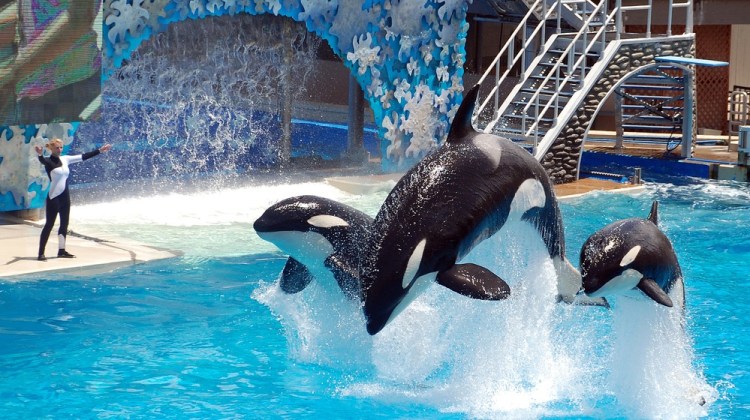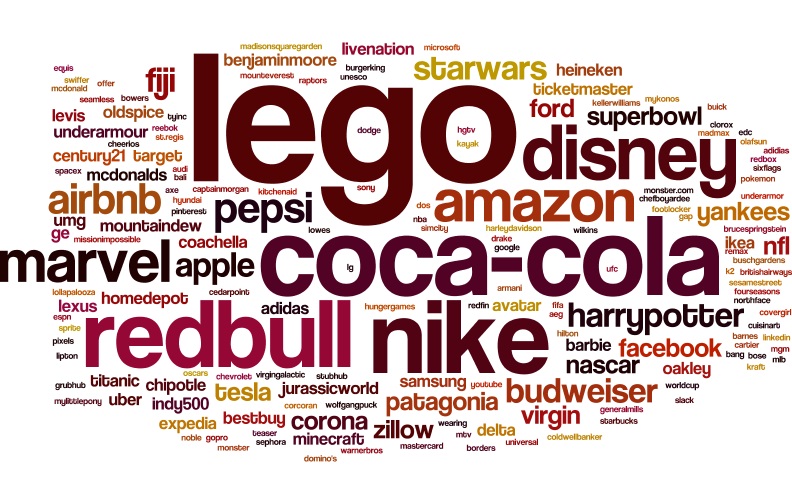Talk about new technology making a splash. This eye-opening idea – replacing live SeaWorld shows with virtual ones – was one of hundreds offered via a crowd-sourced brainstorm session my company recently commissioned. We were tapping into the collective imagination for what virtual reality (VR) might have in store.
How far away is this sort of application? Well, Lytro, maker of the famous “focus after shooting” light-field capture camera, just released Immerge – a camera for virtual reality that lets viewers actually move around in the experience. So imagine that, instead of fighting crowds to watch an unhappy whale do an aquatic tap dance, you were able to put on a headset and actually swim alongside Shamu off the coast of the Pacific Northwest. No captivity, and a much more realistic experience. I can almost taste the salmon.
VR on the verge
Until now, the sciences, therapeutic applications, and the video game industry have taken the lead in VR production and innovation. Marketing via VR, however, is a relatively new venture. As the cost of tools for production and consumption of this medium fall, though, we can expect mass adoption by the public and mass acceptance by major brand marketers, probably within the next decade. As experience would suggest, competitive benefits will accrue to those who plan ahead.
Which is why we commissioned our 100,000-person community of creatives to participate in a virtual global brainstorm to come up with VR ideas for marketers.
Output from our global VR brainstorm
First, here’s the full excerpt on the “Shamu” idea referenced above, as offered by one of the brainstorm participants:
Sea World, Immersive Sea Mammal POV Adventures
Offer customers immersive Virtual Reality experiences in which human beings can experience subjectively what it is like to BE a dolphin, Blue Whale, Orca, otter, sea-lion, etc. as well as learn to “swim,” “hunt,” “feed,” and so forth, in an environment that feels stunningly real.
Although this idea stretches beyond the current capabilities of any standard VR technology, its author was keenly aware of the characteristic attribute of VR experience: it’s immersive. (In this case, it’s even wet.) The other interesting thing about this idea is the way it solves an unstated problem, and a vexing one: the necessity to have an actual physical gathering point for an experience to be shared. If you’ve been following the SeaWorld saga, you know just how keen that problem is for them, and for the stars of their shows. Within just a few minutes, you can probably think of a dozen other space-limited endeavors that might similarly benefit from becoming radically “transportable.”
The brainstorming project resulted in nearly 500 concepts submitted, with more than 164 different brands mentioned. Not surprisingly, the brands that participants targeted the most for ideas were those that are known to take creative marketing risks, such as Red Bull, Nike, Disney, and Coca-Cola (see the word cloud of most-mentioned brands below). LEGO also showed up big – perhaps because it’s been in the virtual reality game all along. In any case, it seems evident that our participants extrapolated from their current brand experiences. Implicit in all of this is that any brand that takes the lead with VR will immediately gain the cache of those creative leaders, like Nike and LEGO.
Here are some of the key themes we saw across the submissions:
Exotic travel & destinations – Bringing users to amazing places across the globe, either to market those destinations, or to help viewers choose among options (i.e. cities, countries, hotels, resorts, beaches, slopes). It’s also easy to imagine these kinds of experiences being sold in their own right, for people who want to see the world but have only a limited budget.
Try before you buy – Trying out clothing or products before purchasing; could this make returns of products purchased online a thing of the past. Many of these ideas place a premium on tactile stimuli, so those making VR gloves and suits had best keep the pedal to the R&D metal on adding additional senses to the VR experience.
Test drive – Closely related to “try before you buy,” focused primarily on test-driving various kinds of (very cool) vehicles. Again, you can imagine these experiences as gateways to purchase or as intriguing cross-branding opportunities between dealerships and video game companies; imagine being able to purchase the car you just drove to Grand Prix gold.
Center of attention – Blending vicarious thrills and narcissism into an irresistible cocktail, this use case puts VR subjects in the shoes of an athlete or celebrity on the field of play or walking the red carpet. That celebrity’s signature perfume, clothing line, or other product will play a huge part in the experience.
Branded event experiences – Immersion of viewers in events that are either put on specifically for the VR experience or that might be too exclusive or difficult to attend without VR. For example, movie studios can sponsor a behind-the-scenes tour of an upcoming movie.
Real estate showings – Concepts focused on showing homes, apartments, neighborhoods, and commercial real estate. Is VR the disruption this industry needs?
Shopping in a virtual world – The next logical iteration of being able to order groceries directly from Amazon is to actually be able to shop a virtual marketplace and purchase from within that “store.”
The best seat in the house – Allows viewers to “be there” – in exclusive seats, at incredible angles, or to have exclusive experiences with athletes, celebrities, and bands. Everyone gets a front-row seat and back-stage pass.
How it’s made – Many contributors thought it would be interesting to show viewers a behind-the-scenes look at how things come together, from the food you eat to the cars you drive.
VR and the new meaning of mobile
What makes all of this even more exciting is the common theme we’re seeing throughout all of these ideas (yes, including Shamu): VR promises an exponential leap forward in what we mean by “mobile.” For those of us who are still trying to catch up to the idea that nearly all information and transactions are mobile, it’s head-spinning to contemplate a world where many experiences will soon be as well. I don’t know about you, but for me, that’s precisely where science and fiction have always intersected. And now it’s happening right in front of my eyes … at least, I think it is.
James DeJulio is cofounder, president, and chief creative officer of Tongal, a crowdsourced video-content studio for brands, agencies, and entertainment companies.
VentureBeat's mission is to be a digital town square for technical decision-makers to gain knowledge about transformative enterprise technology and transact. Learn More


